| |
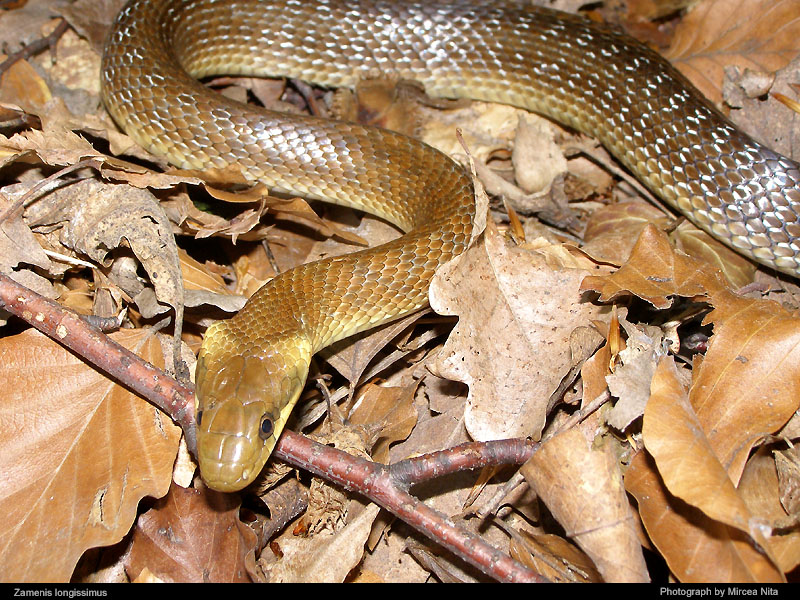
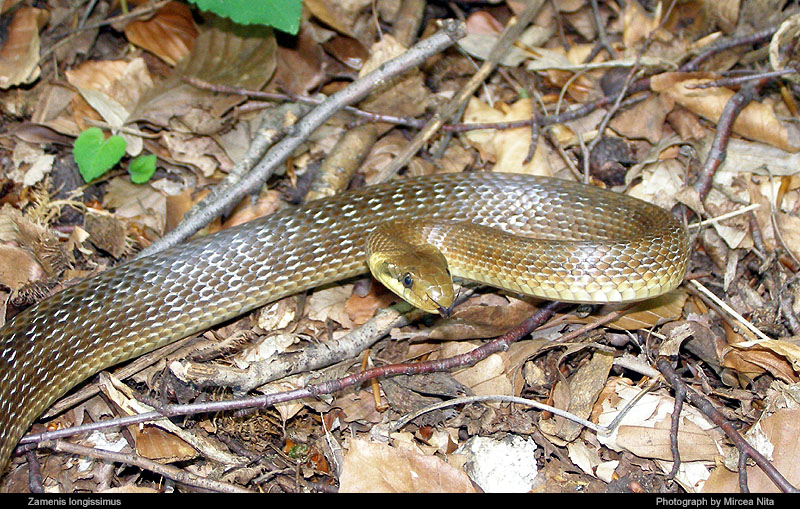
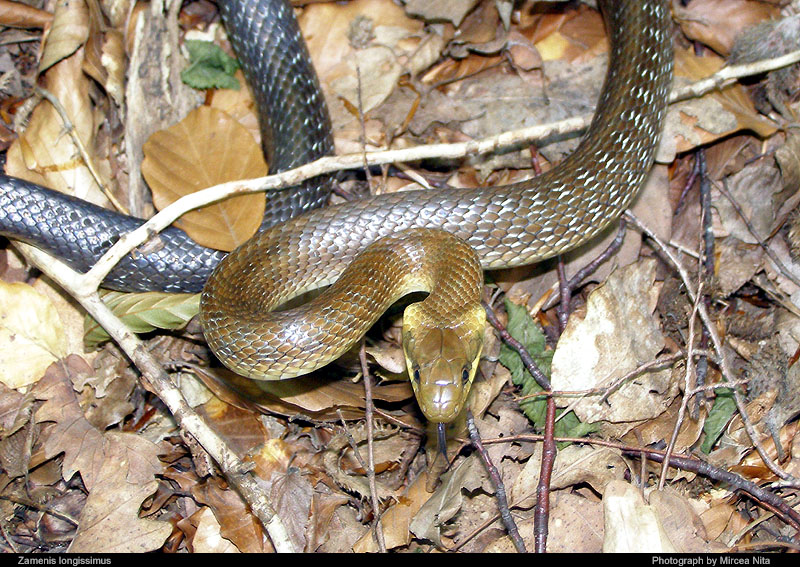
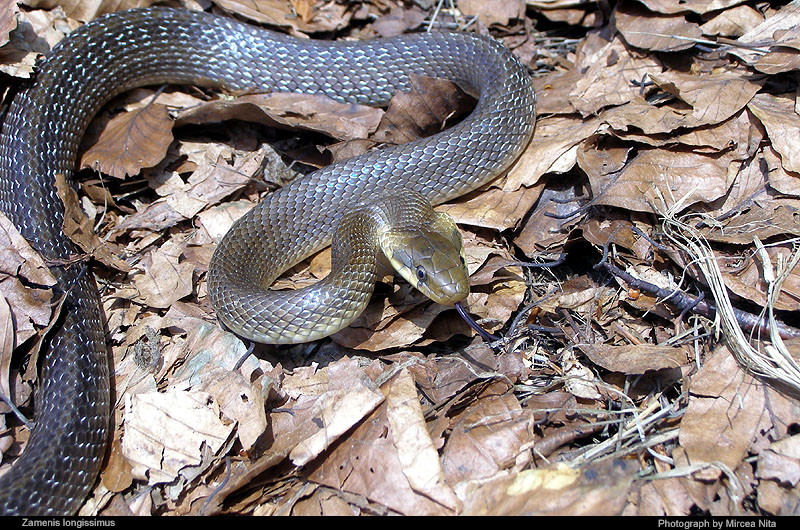
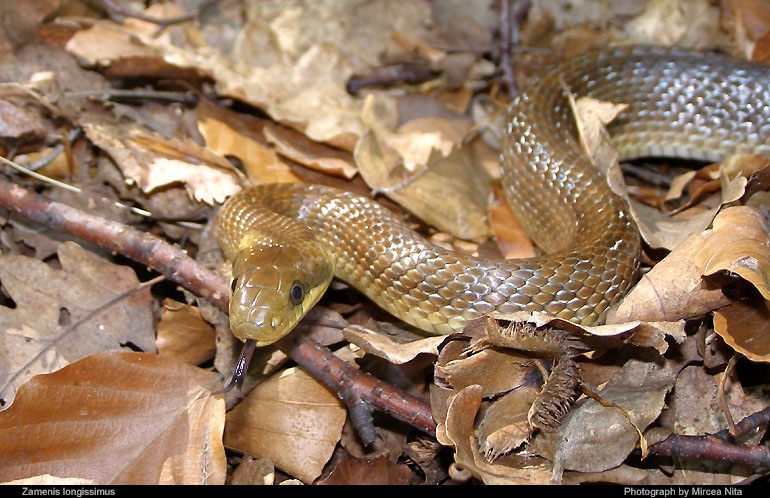

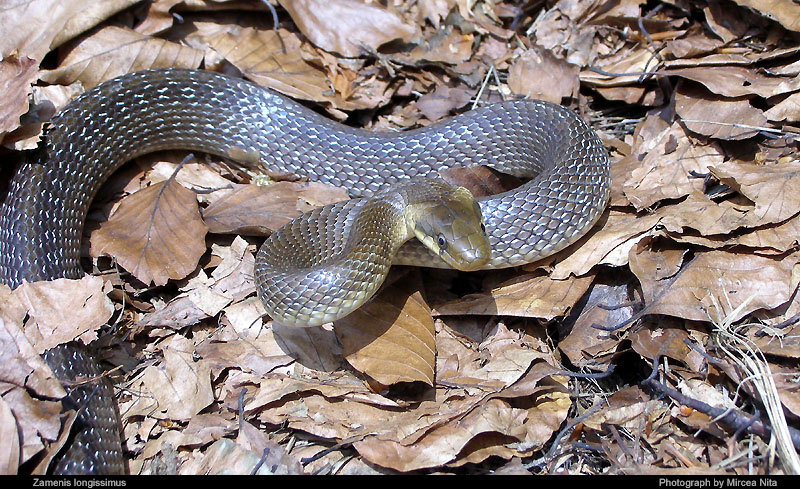
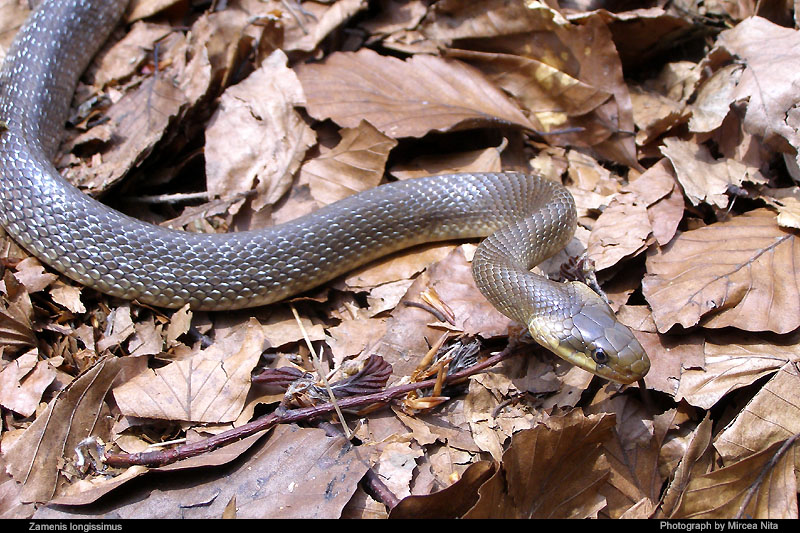
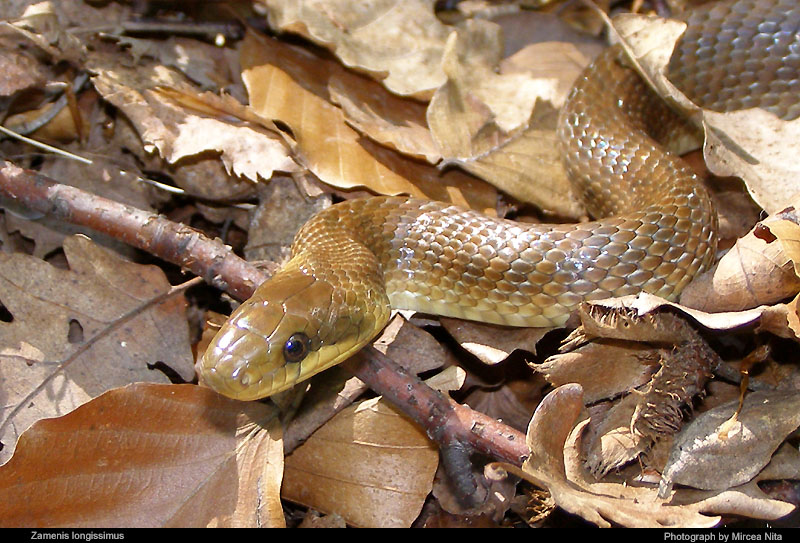
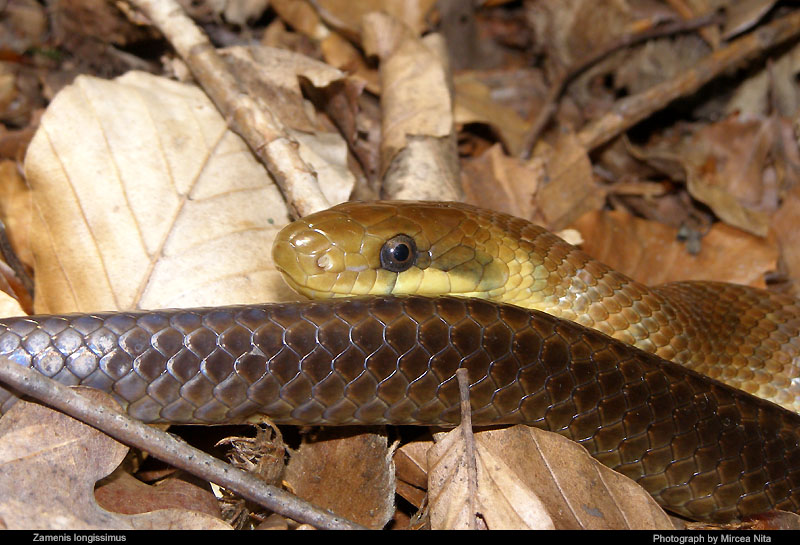
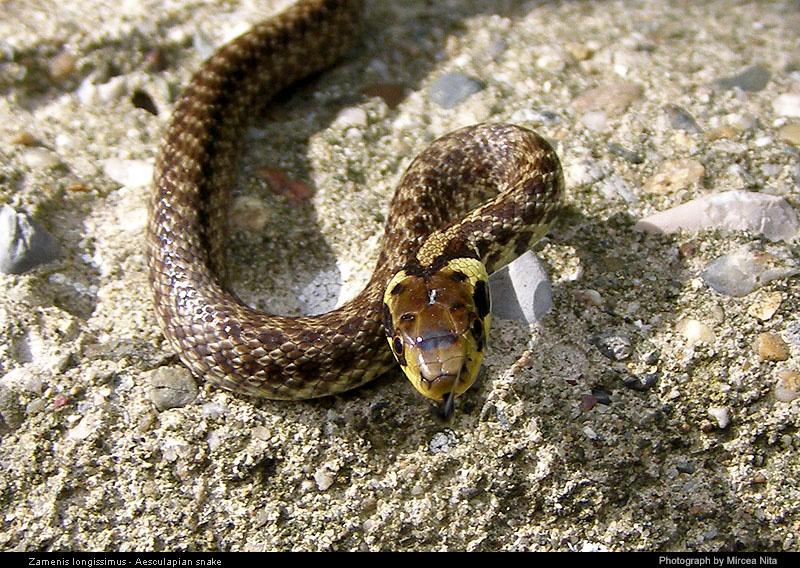
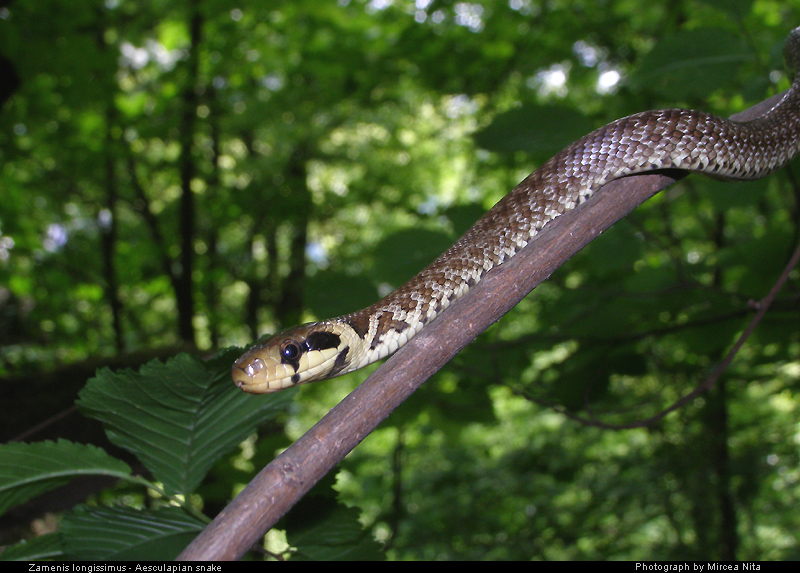
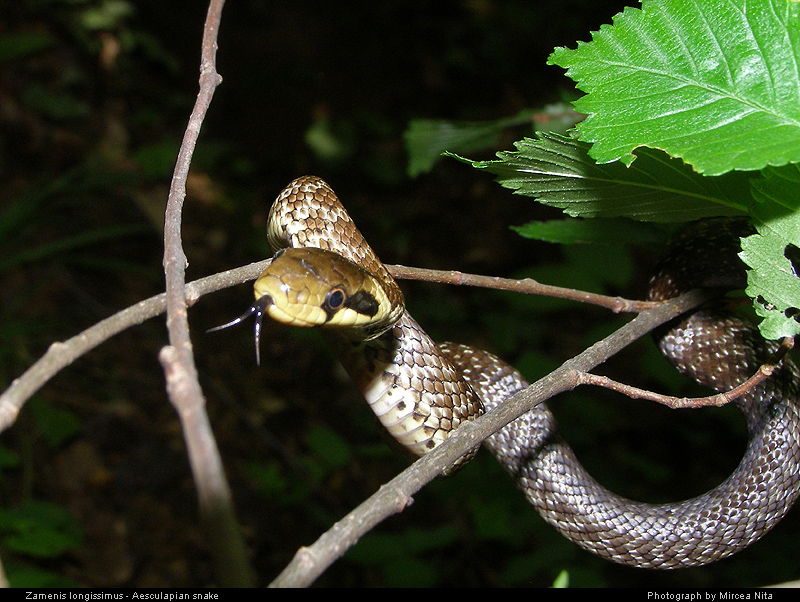
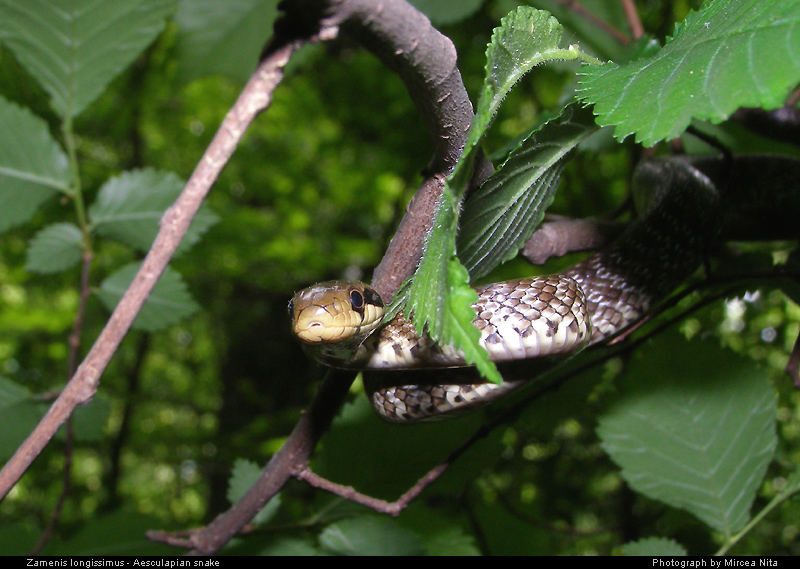
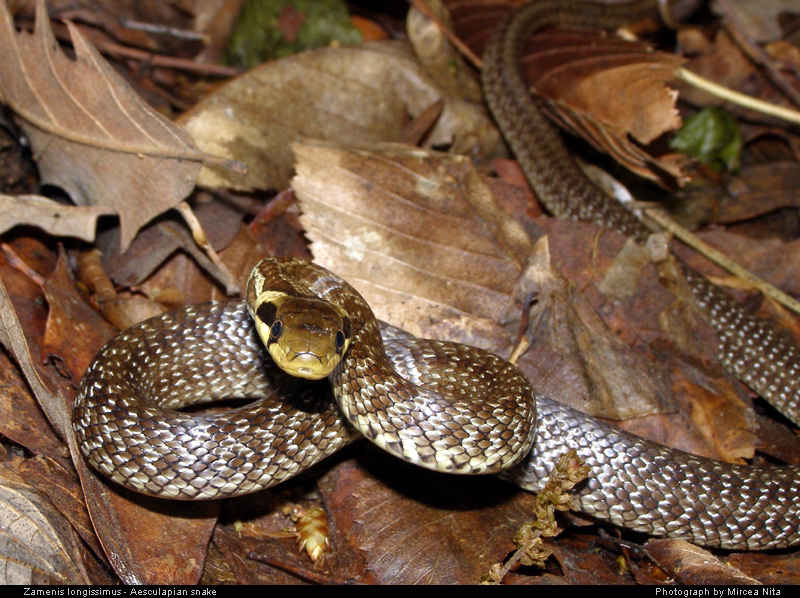
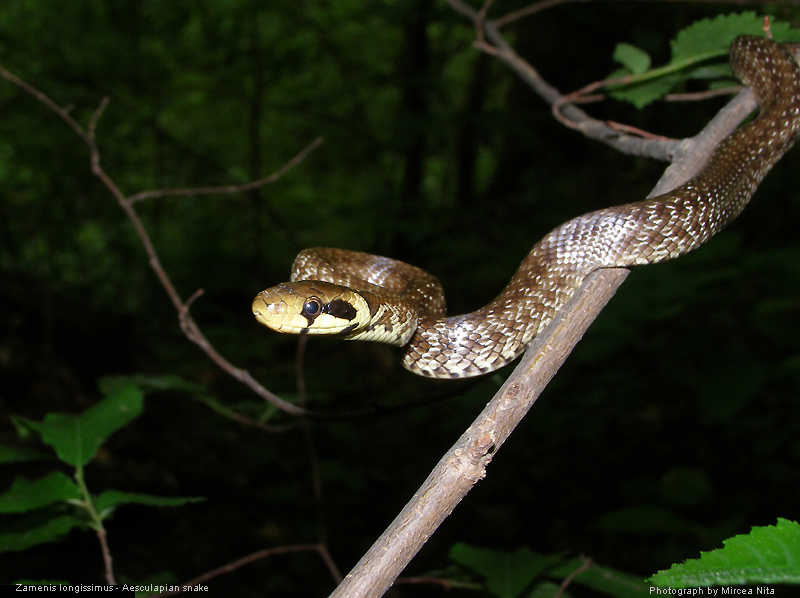
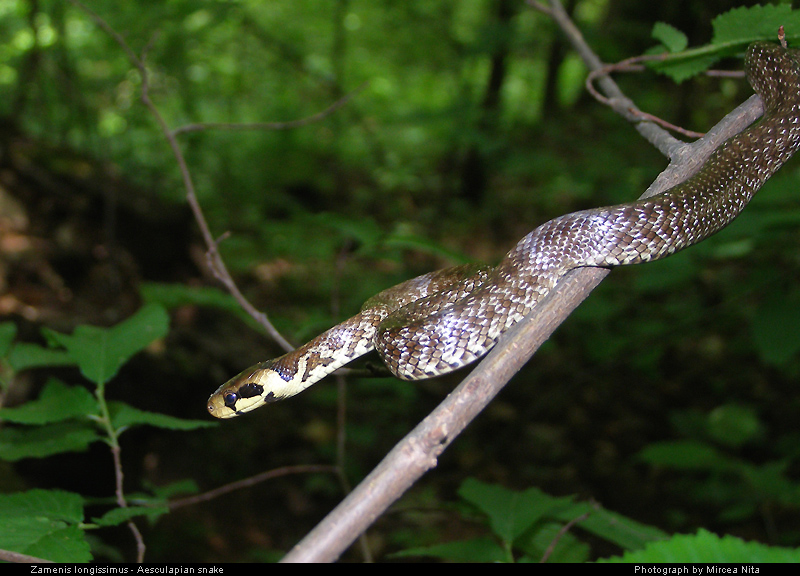
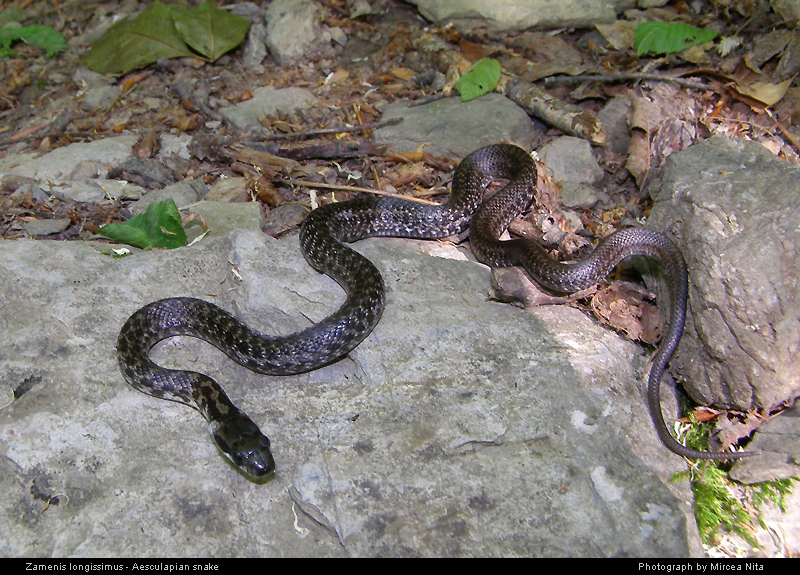
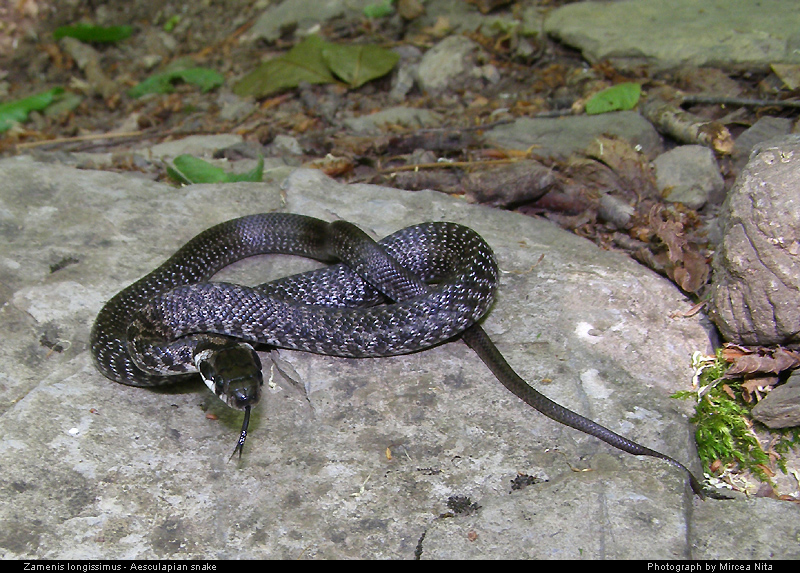
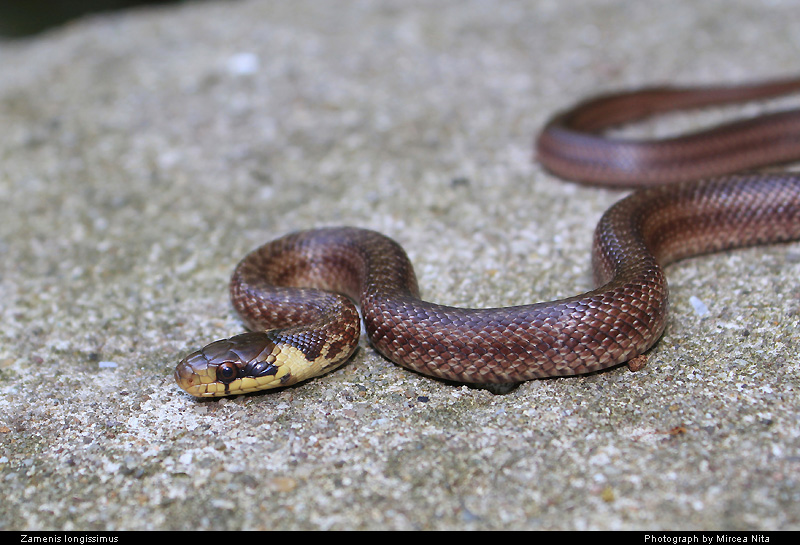
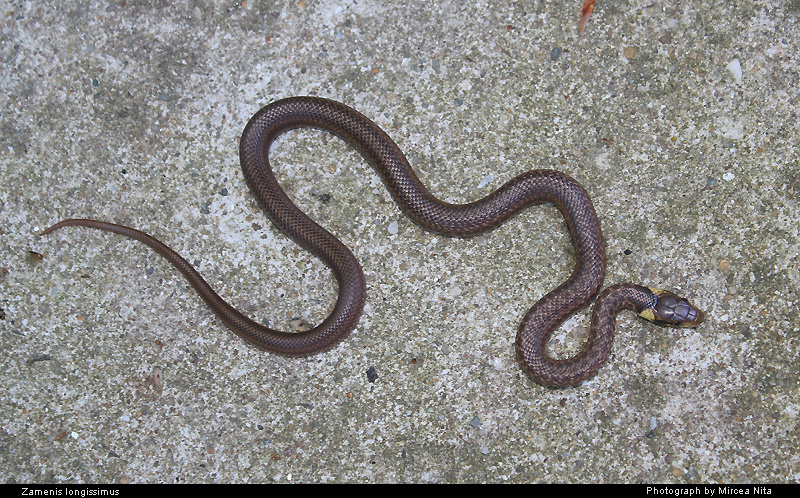
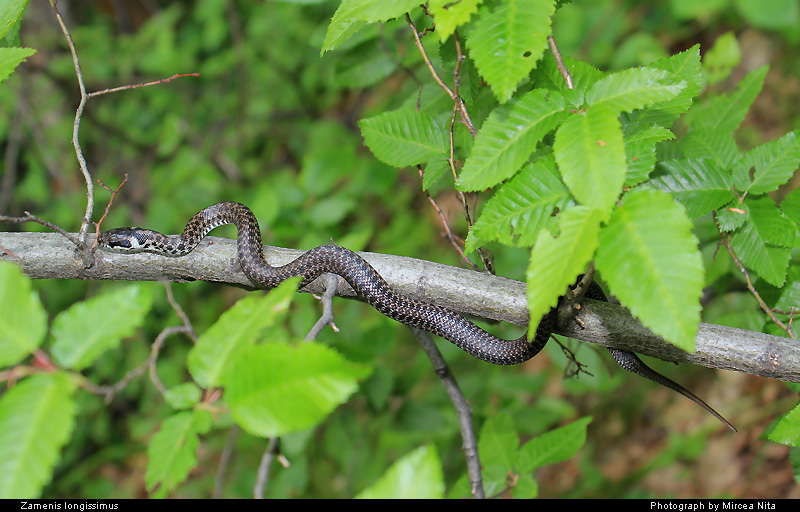
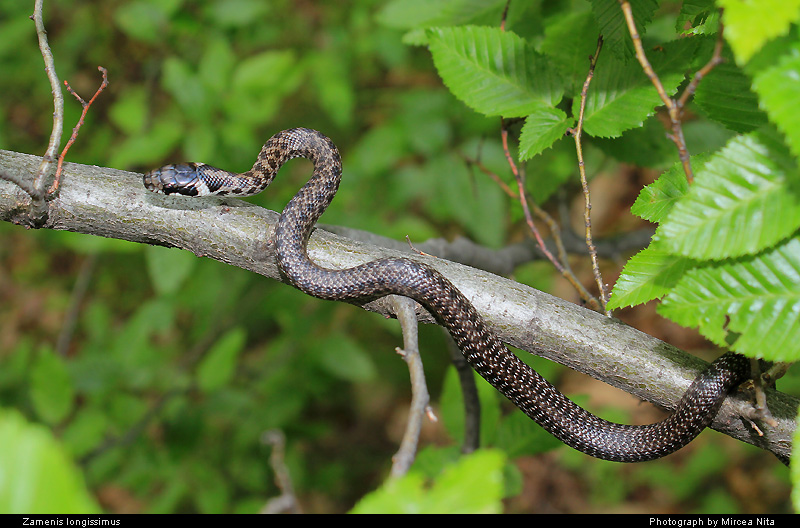
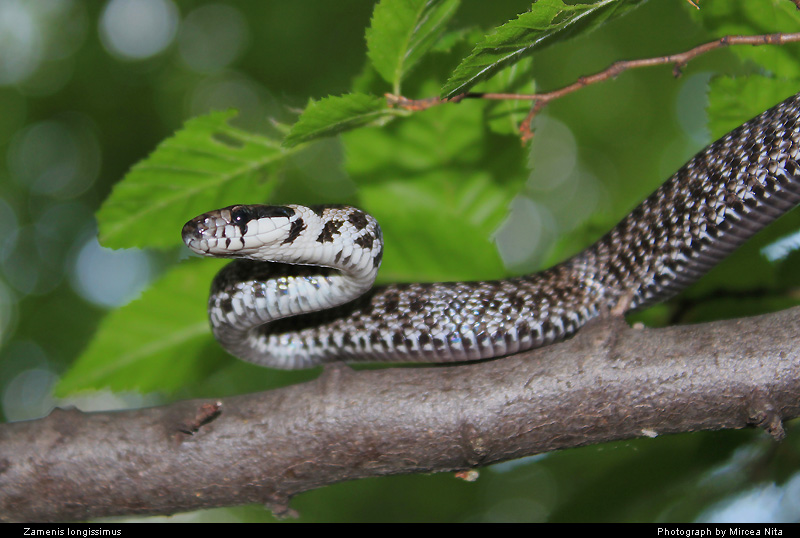
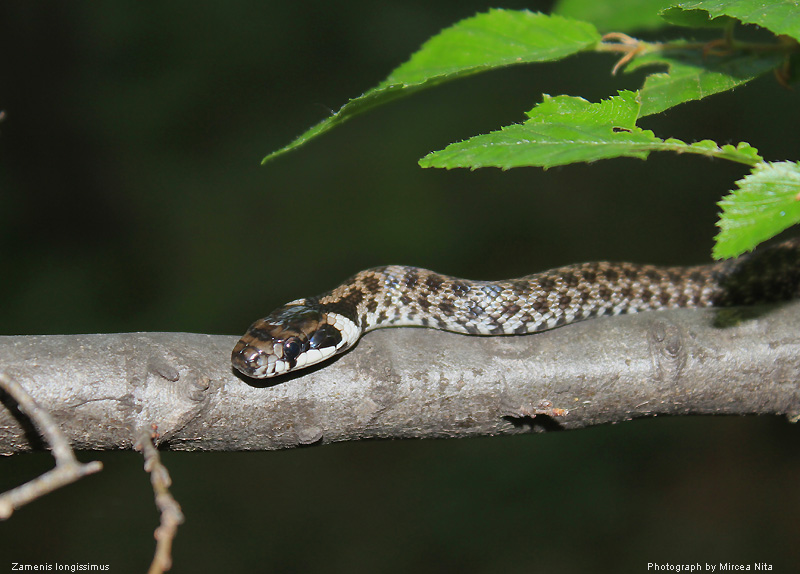
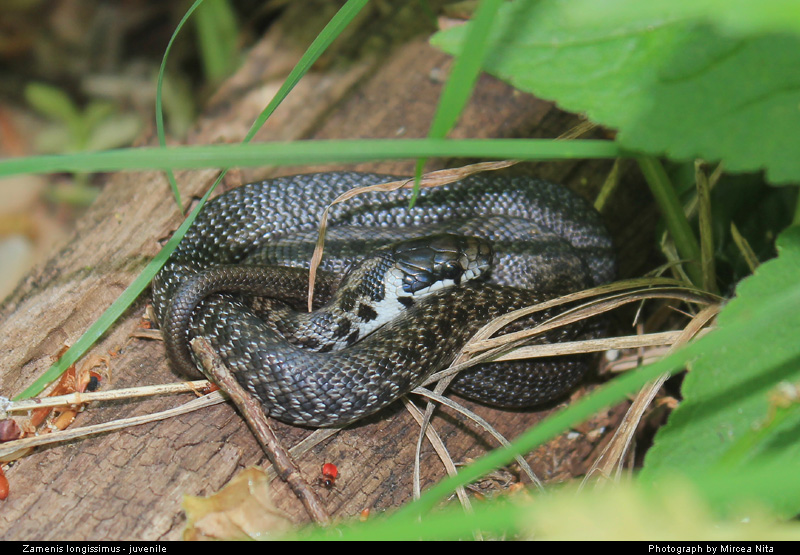
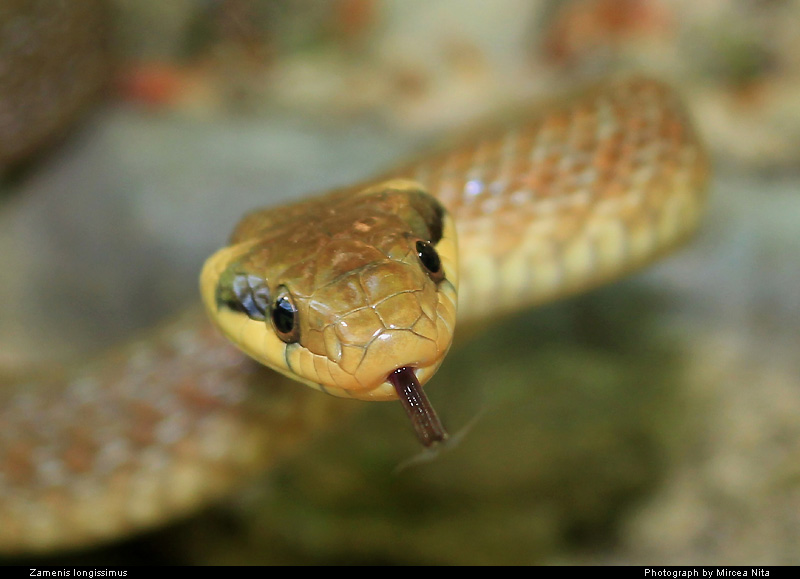
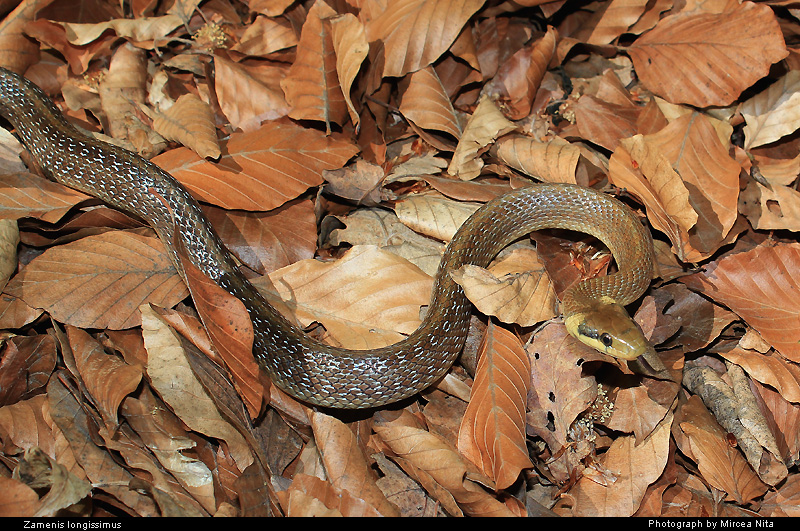
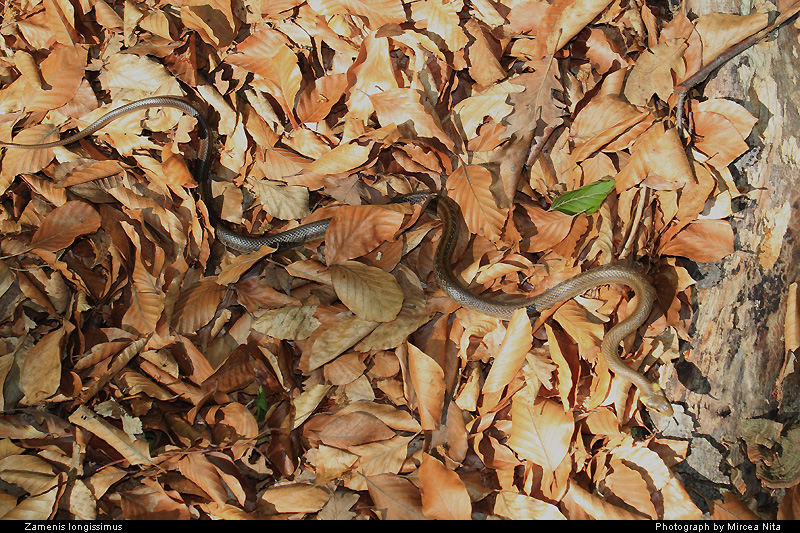
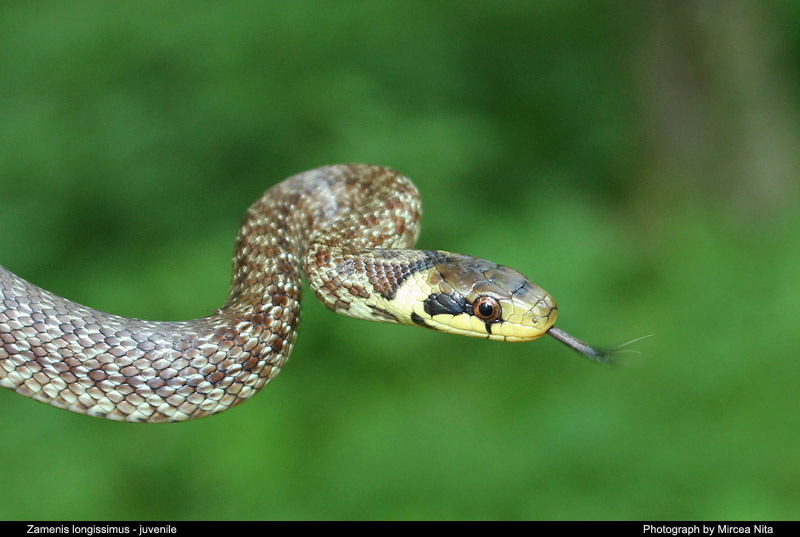
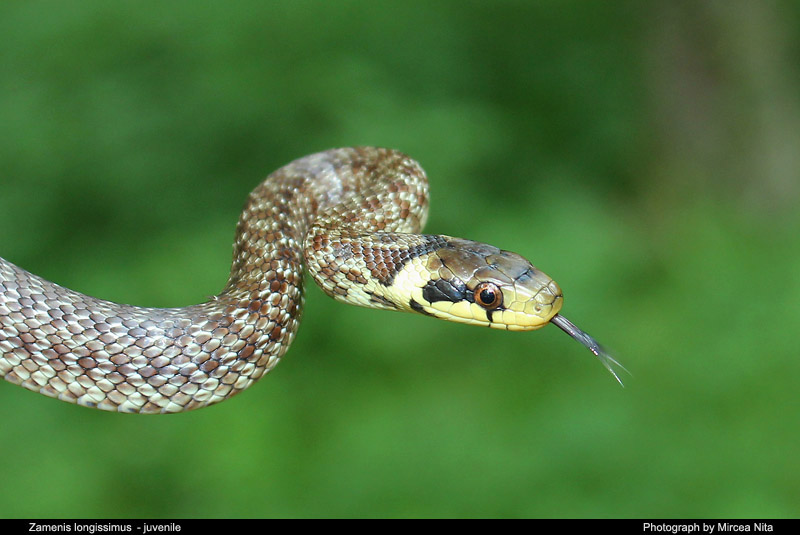
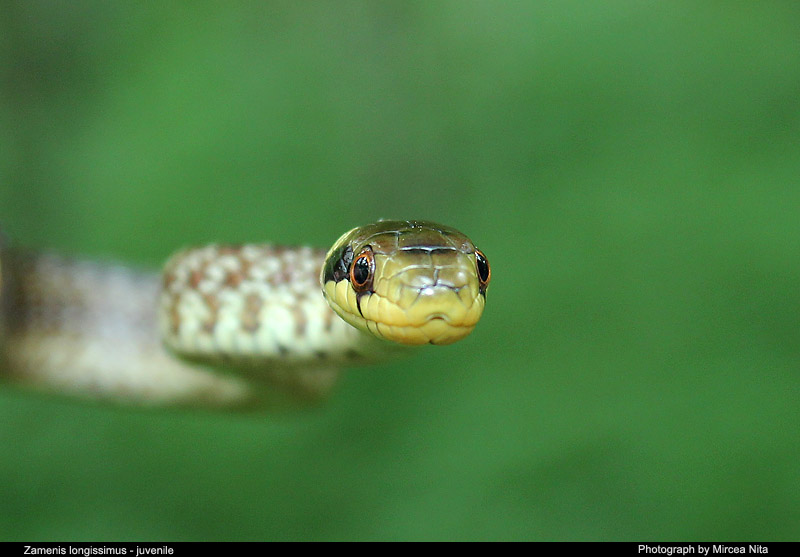
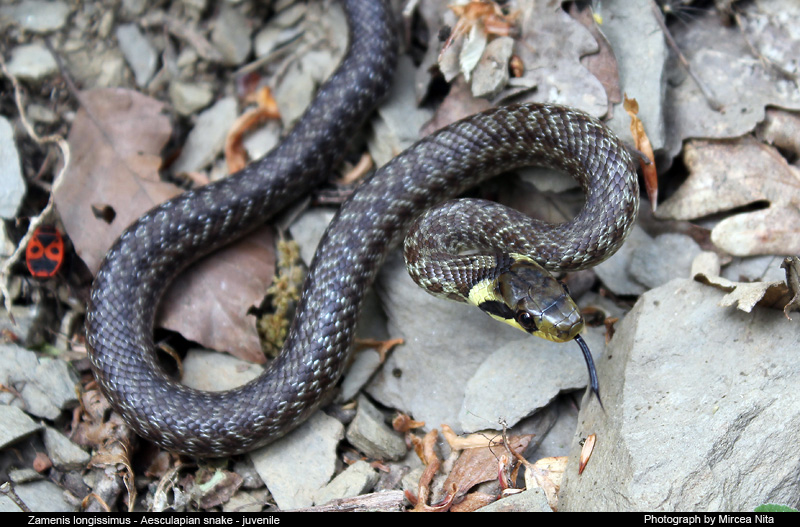
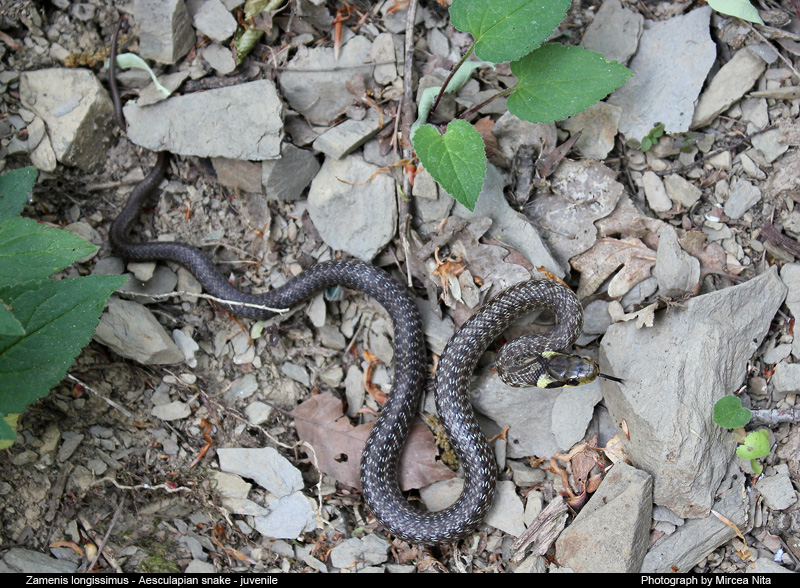
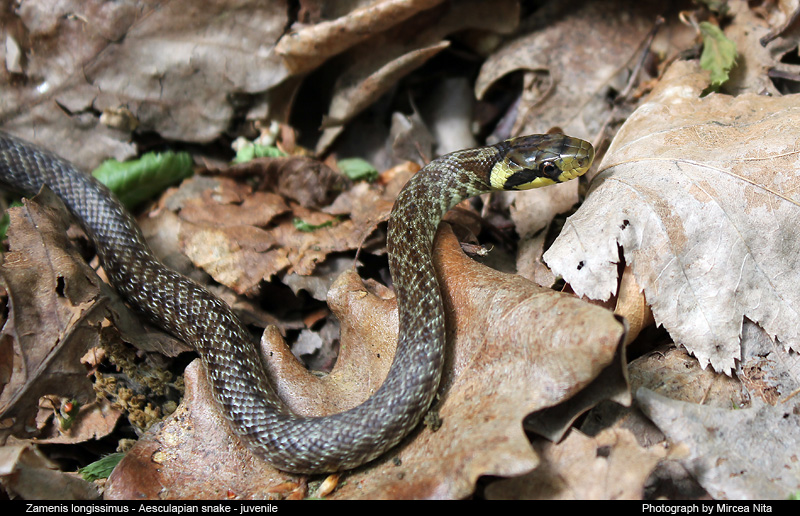
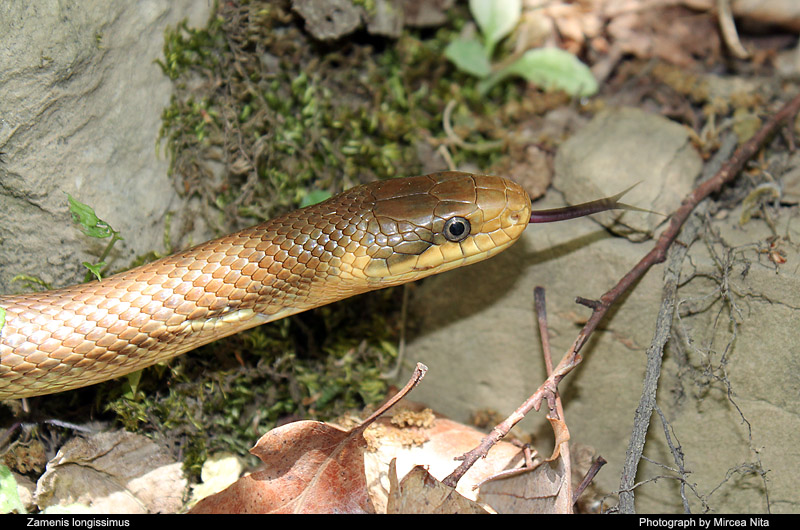
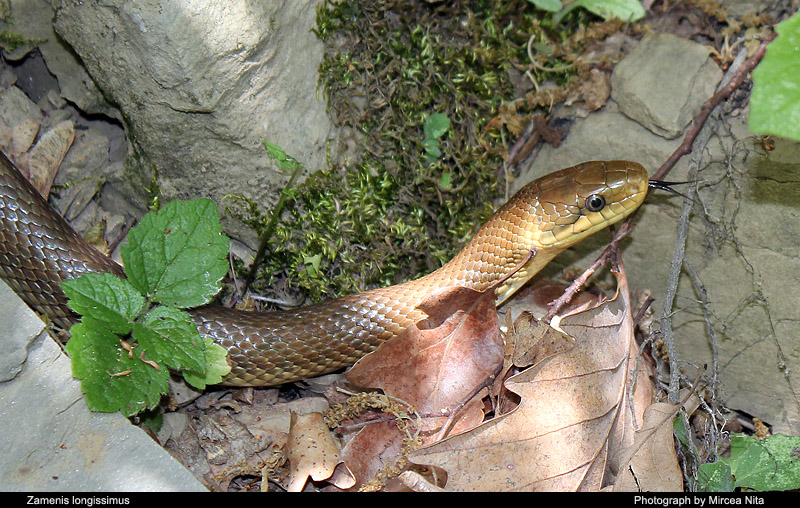
Zamenis longissimus
Aesculapian snake - Zamenis longissimus (Elaphe longissima) - Laurenti, 1768
Description:
Zamenis longissimus is a non-venomous snake with a maximum length of about 200 cm, but averaging 140-160 cm.
It has a narrow head, snout obtuse, scarcely prominent and the tail is about one-fifth to one-fourth of the total length. There is one pre-ocular (sometimes divided) and 2 post-oculars and 8-9 supralabials.
The coloration is yellowish-grey to dark olive-brown above, some of the scales with whitish lines on the margins, occasionally forming a network; sometimes with a yellowish vertebral stripe or with four darker stripes along the body. The belly is grayish, whitish or yellowish-olive. Juveniles can be confused with grass snakes due to the yellow collar on their neck but their scales are smooth rather than keeled. They are brownish or brownish-green with dark brown dorsal spots forming four to seven longitudinal series, a A-shaped black marking on the nape behind the yellow nuchal blotches, which are brighter than in the adult, a dark brown bar across the forehead, and a black vertical line below the eye; the belly is grayish or yellowish-olive. Iris is dark grey or brown.
Biology:
Generally it likes the sun (in the northernmost parts of its range it is normally found on southerly-facing, exposed slopes) but avoids excessive heat never showing itself in the daytime during the hotter months in the South of Europe, where may be found in more humid places than elsewhere. Although a good swimmer, it seldom enters the water of its own accord.
The Aesculapian Snake takes its winter rest up to 6 months, depending on climate from October to March. The period of greatest activity is May to July.
Pairing takes place between the middle of May and the middle of June. In June-July a clutch of 5-18 (usually no more than 15) eggs is laid in holes in walls or hollow trees, under moss, sometimes even in the dung-heaps of farms, and hatch in September.
The young are about 23-25cm long on hatching.
It is normally a diurnal (active by day) and crepuscular (active at dawn/dusk) snake.
It feeds chiefly on small mammals like mice, moles, occasionally on birds and their eggs, and lizards. The young normally feeds on small lizards.
The average life span for Zamenis longissimus is about 25 years. They reach sexual maturity at 80 to 100 cm.
Habitat:
Zamenis longissimus inhabits a wide range of habitats: in woods; among shrubby vegetation; in sunny embankments and meadows. Frequently found in dry stone walls. A semi-arboreal species, it climbs well, and often ascends trees. Usually it is found at altitudes from sea level to 1700 m.
Distribution:
The range of this species is very large compared with many other European snakes, being found from Spain to the Caucasus. Its distribution range includes the following countries: Albania, Bulgaria, Hungary, Romania, Austria, Czech Republic, Croatia, France, Georgia, Germany, Greece, Italy, Spain, Switzerland, Slovakia, Slovenia, Moldova, Serbia and Montenegro, Bosnia, Poland, Turkey, Russia, and Iran. There is also an introduced population in North Wales, United Kingdom, which appears to be established.
Scientific name: Zamenis longissimus
Common name: Aesculapian snake
IUCN status: listed as Least Concern in view of its wide distribution and presumed large population. It occurs in a number of protected areas.
It is listed on Annex II of the Bern Convention and Is included in Annex IV of the EU Habitat Directive. The species is present in a number of protected areas throughout its range. It is protected by national legislation in most range states.
Synonym/s:
Coluber aesculapi - Lacepede, 1789;
Coluber longissima - Laurenti, 1768;
Coluber sellmani - Donndorff, 1798;
Elaphe longissima - Laurenti, 1768.
Taxonomy:
This species is included in Zamenis following Utiger et al. (2002). According to Montori and Llorente (2005), the correct name should be Zamenis longissimus.
Two subspecies are recognized: Z. l. longissimus (Laurenti, 1768) is widely distributed in Western, Central and Southern Europe, except in Southern Italy and Sicily which are inhabited by Z. lineatus (which was separated from this species by Lenk and Wuster, 1999). Z. l. rechingeri Werner, 1932 is found in the Larger Cyclades islands, in particular on Amorgos.
References:
Arnold, E. N., and J. A. Burton. 1978: A Field Guide to the Reptiles and Amphibians of Britain and Europe. Collins, London;
Boulenger, G.A., 1913: The Snakes of Europe;
Fuhn, I. & S. Vancea, 1961: Fauna Republicii Române, 14. Reptilia (Testoase, Sopârle, Serpi). Bucuresti;
IUCN 2011. IUCN Red List of Threatened Species. Version 2011.2. .
Gasc, J.-P., A. Cabela, J. Crnobrnja-Isailovic, D. Dolmen, K. Grossenbacher, P. Haffner, J. Lescure, H. Martens, J.P. Martinez-Rica, H. Maurin, M.E. Oliveira, T.S. Sofianidou, M. Veith & A. Zuiderwijk, 1997: Atlas of Amphibians and Reptiles in Europe. - Societas Europaea Herpetologica und Muséum National d'Historie Naturelle (IEGB/SPN), Paris;
Joger, U. & N. Stümpel, 2005: Handbuch der Reptilien und Amphibien Europas, Wiebelsheim;
McDiarmid RW, Campbell JA, Touré T. 1999. Snake Species of the World: A Taxonomic and Geographic Reference, vol. 1. Herpetologists' League. ISBN 1-893777-00-6(series). ISBN 1-893777-01-4 (volume);
Street D. 1979. The Reptiles of Northern and Central Europe. London: B.T. Batsford. ISBN 0-7134-1374-3;
Steward JW. 1971. The Snakes of Europe. London: David & Charles, Newton Abbot. ISBN 0-8386-1023-4.
|
|

